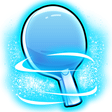Obstruction
Rules
Graham Leslie Asked 9 months ago
Can you help with a situation that occurred in a recent local league match.
Player A hit a good return but didn't recover and was still leaning in over the table when Player B returned the ball. This return passed over the net at a height of about 30cm and was clearly going to go long. The ball struck Player A on his free hand as he was over the table, the free hand was roughly 15 to 20 cm inside the end line when it was hit. Both players claimed the point - Player B for obstruction and Player A on the grounds the ball would not have made contact with the table and under a recent rule change he should be awarded a point.
The other players present were unsure who should have the point. I am not aware of a change of rule that would allow Player A to obstruct the ball and still be awarded the point. Is there such a rule? I have not seen a full set of rules and regulations for quite some time.
Many Thanks Graham
 Alois Rosario Answered 9 months ago
Alois Rosario Answered 9 months ago
Hi Graham,
Thanks for your question; it's a good one, and these situations can indeed be tricky during a match. We explain it in this tutorial on Hitting the ball on the Full.
Based on the scenario you've described, the point should be awarded to Player B. According to the official rules of table tennis, if a player's body or anything they wear or carry touches the ball as it's traveling towards their side of the table, it's considered an obstruction. This rule applies regardless of whether the ball was going to land on the table or not.
There has been no recent change to this rule that would allow a player to touch the ball with their free hand while it is in play and still win the point, even if the ball was heading out of play. The key point here is that the ball was still in play and had not yet completed its trajectory to determine if it would have indeed gone long. In your described case, since Player A's free hand touched the ball before it had a chance to land, the point correctly goes to Player B. I hope this clears up the confusion.
Recommended Video
Ball Touching Your Finger
We explain the rule when the ball touches your finger or any other part of your body.
Watch NowThoughts on this question
Become a free member to post a comment about this question.
Graham Leslie Posted 9 months ago
Many thanks for your explanation Alois. This clears up the matter and I have notified all our league players in case a similar incident occurs in the future. In my scenario the match was very close and the incident happened when it was 8-8 in the the final game. It looks like Player A was trying to "pull a fast one". In the end, after a lot of heated discussion, a let was played and Player B went on to win the game 11-9 to take the match. Thanks to you and Jeff all you do to help us improve our understanding of the game.
Glad that it is cleared it up for you. These type of situations do occur a bit at clubs and always difficult to handle if you don't have someone on hand that knows the rules well.